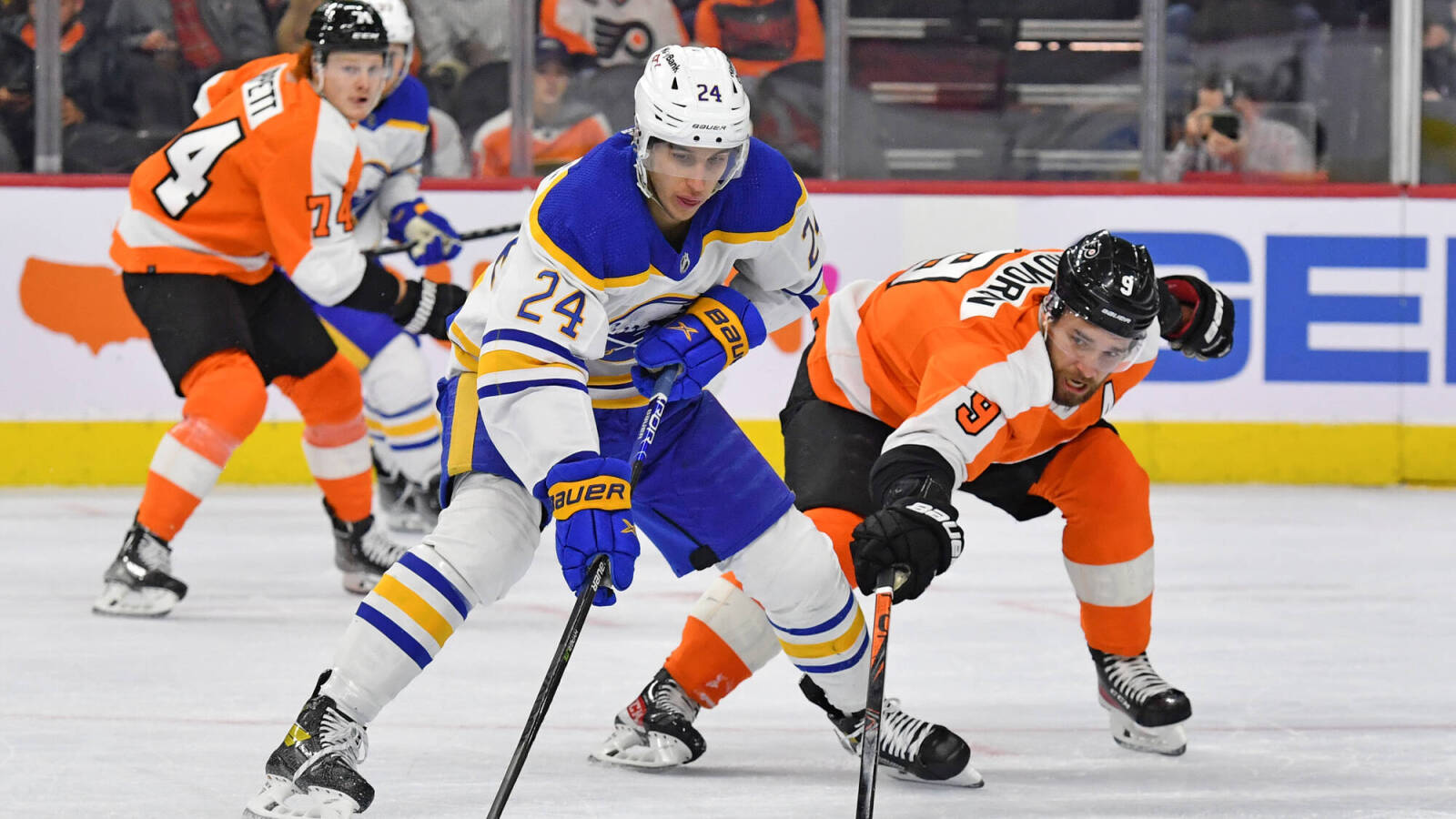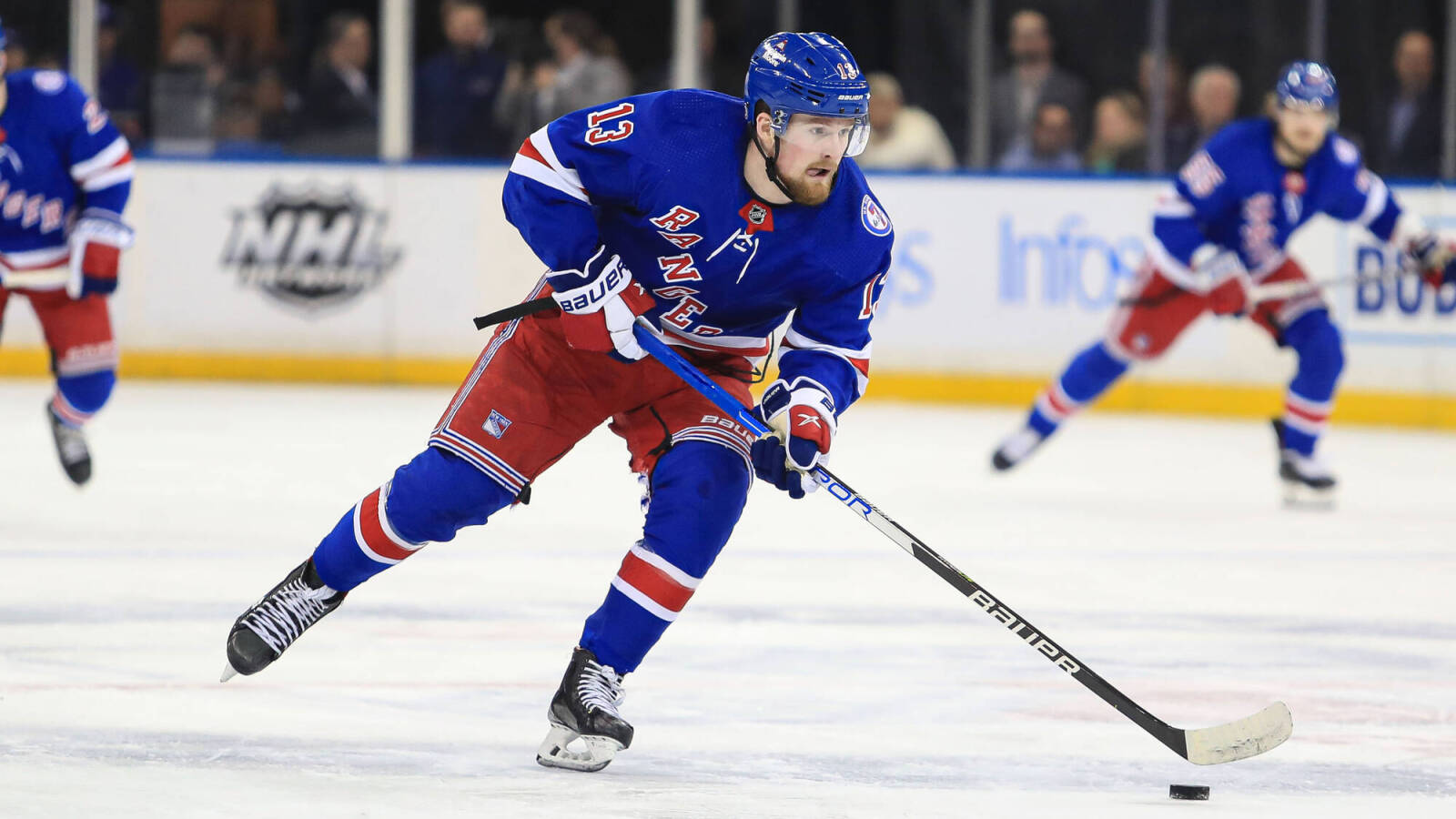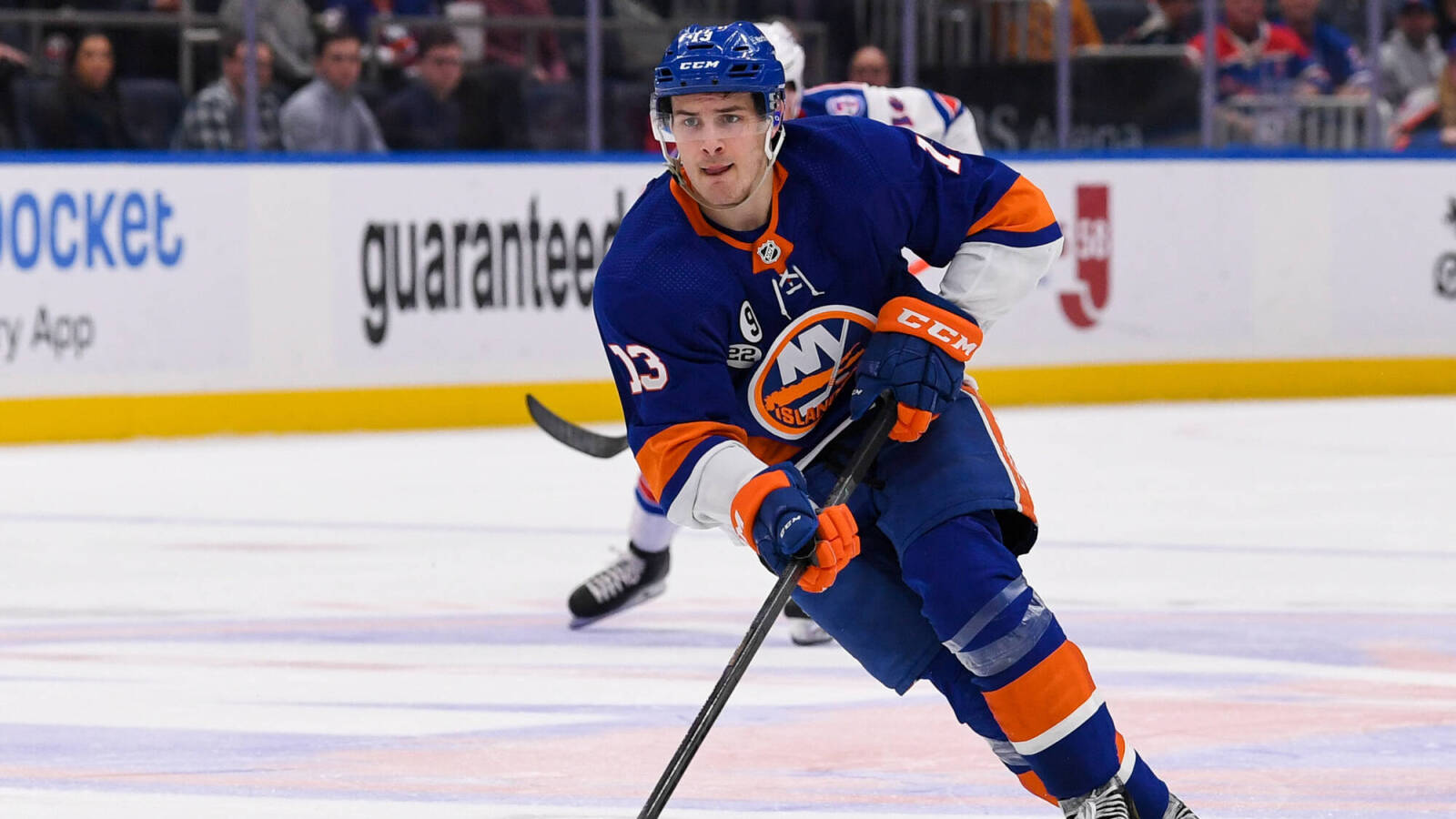
The contract standoffs between restricted free agents and their clubs have dominated the headlines this offseason. Matthew Tkachuk’s RFA status (and desire to reach unrestricted free agency) catalyzed this summer’s biggest blockbuster trade, and the ongoing contract negotiation between Jason Robertson and the Dallas Stars could have a major impact on the future of that franchise.
As new stars emerge across the NHL, the importance of a player’s RFA years has never been higher. More and more teams are locking up their young talent earlier and earlier, and here we’ll take a look at the respective situations of the players currently slated to be next summer’s big-name RFA’s.
The Easy Ones
One of the major reasons the Stars have had difficulty signing Robertson to a long-term deal is that they already have significant contracts on their books for next season, and have precious little cap space to work with. With Jamie Benn, Tyler Seguin, Miro Heiskanen, and more already taking up a significant portion of the team’s salary cap, the Stars just don’t have the room to fit a market-rate long-term deal for Robertson into their balance sheet.
There are other teams, though, who don’t have that sort of problem, and whether they can get their upcoming restricted free agents locked up is more of a matter of finding the right deal for both sides rather than finding a way to fit another big contract onto their payroll.
A few players are in that situation, and their teams are likely to find getting them locked into new contracts a relatively easy process.
Two of the bigger names set to become RFA’s next summer, Trevor Zegras and Troy Terry, fit into that category. The Ducks are one of the few teams in the NHL still with a good amount of cap space on their books, and that figure will only rise next summer when John Klingberg, Kevin Shattenkirk, and Dmitry Kulikov’s deals expire.
So, while the Stars’ cap situation is likely going to keep them from inking a long-term deal with their star RFA forward, the Ducks won’t have that problem with their own two stars. Assuming Zegras continues his ascension to superstardom and Terry can be a productive top-six forward once again, GM Pat Verbeek and the Ducks should find their RFA negotiation process with those two players to be a relatively straightforward process.

The Buffalo Sabres are in a similar boat, with a significant amount of cap space currently at their disposal and even more set to open next summer. Center Dylan Cozens will be an RFA at that point, and the financial flexibility of the Sabres will come in handy.
Because the Sabres are in a healthy salary cap position, they could have the option to offer a long-term contract to Cozens that might cost more than he’s worth in the short-term, but provide long-term savings. (similar to what the Carolina Hurricanes had in mind when they gave Jesperi Kotkaniemi an eight-year, $4.82MM AAV extension) If the Sabres were a cap-strapped contender, such an option would likely be closed to them.
While the Montreal Canadiens aren’t flush with cap space at the moment like the Ducks and Sabres, they should be in better financial shape next summer after Jonathan Drouin and Evgenii Dadonov’s deals expire. The Canadiens, like the Sabres and Ducks, have a talented, ascending forward set to become an RFA next summer in Cole Caufield. Without the near-term pressures of Stanley Cup contention or major salary-cap issues, it’s likely that the Canadiens will have more than enough financial bandwidth to keep every possibility open regarding Caufield’s next deal.
The Contending Teams
This is where things get a bit dicey. For the teams mentioned above, the challenge in getting their young players signed long-term won’t be selling them on the team’s long-term vision. By virtue of their recent success, these clubs likely won’t have that issue. Instead, their problem will be the issue the Dallas Stars are facing now: a lack of cap space.
The New York Rangers are one of those teams. The Rangers went on a run to the Eastern Conference Final this spring, and it’s clear that the team is intent on going all-in to win a Stanley Cup over the next three seasons, the final three seasons where Hart Trophy candidate Igor Shesterkin costs just $5.6MM against the cap.
The Rangers’ desire to maximize their odds of winning in the short-term has its benefits, chief among them being that they have built one of the most talented rosters in the NHL for next season. But this win-now chase has its inevitable drawbacks. In building that talented roster, the Rangers have locked away a significant percentage of their cap space for the next several seasons, and have left little room to add more long-term deals onto their books.
Especially with their signing of Vincent Trocheck to an eight-year deal, it doesn’t look as though the Rangers will be able to fit any more long-term, market-rate contracts for top-four defensemen or top-six forwards onto their cap sheet. Which leaves the question: if one of Alexis Lafreniere or Filip Chytil (or both) establishes himself as a top-six forward this season, how will the Rangers be able to sign them to a long-term extension?

Moreover, since K’Andre Miller has played at a top-four level this past season, how will the Rangers be able to afford his next contract? If he takes another step in his development, do they even have a chance at affording a long-term deal with him?
They could, and likely will, go in the short-term direction with these contracts, looking to keep the costs as low as possible for these years where they’re in Stanley Cup contention.
But the long-term questions persist. Lafreniere, Chytil and Miller are supposed to be the foundational pieces that support the next generation of Rangers contenders. The Rangers sent a famous letter to their fans and embarked on a major rebuild in order to acquire players like that trio. If the Rangers are unable to keep these young players long-term because they’re locked into contracts for veterans such as Trocheck, Barclay Goodrow, and Jacob Trouba, it raises the question of why they even chose to endure such a painful rebuild in the first place.
So while the on-ice implications of an RFA crunch are relatively straightforward, — it’s about whether a team has a certain player on its roster or not — particularly difficult RFA situations such as the one the Rangers will face next summer have the potential to raise more significant questions about the long-term direction and overall team-building identity of a franchise.
It’s worth mentioning too that the Rangers aren’t the only team nearing that RFA crunch next summer, although they are the one in the most extreme position. The Edmonton Oilers, another Stanley Cup hopeful, could find themselves in a similar situation with defenseman Evan Bouchard.
The same can be said about the Minnesota Wild with Matt Boldy, and the Colorado Avalanche with Alex Newhook, with the latter team’s cap sheet set to become especially tight once Nathan MacKinnon’s upcoming mega-extension kicks in.
The Soon-To-Be-UFA’s
This group of restricted free agents is perhaps the most difficult for teams to manage. GM Brad Treliving and the Calgary Flames saw it this summer when Tkachuk informed them of his decision to not consider signing a long-term extension to remain a Flame. While not every RFA who is arbitration-eligible and close to hitting UFA status will force an exit, the RFA’s in this section have the potential to dominate the headlines next summer.
For example, the Dallas Stars could be in another difficult RFA negotiation next summer, when center Roope Hintz is an RFA. Hintz will have the option to accept a lucrative arbitration award and then hit unrestricted free agency in the summer of 2024. Since Hintz is now the Stars’ first-line center, they’re likely to want to keep him from doing so. But with Seguin and Benn each costing north of $9MM against the cap, the Stars might find it difficult to meet Hintz’s asking price.
They might find it especially difficult to do so if they also want to re-sign Joe Pavelski, who has been integral to Robertson and Hintz’s development and will need a new contract of his own.

The New York Islanders are in a similar situation with their own first-line pivot, with Mathew Barzal able to accept an arbitration award next summer and become a UFA in 2024. For the Islanders, the expiration of Josh Bailey, Matt Martin, and Cal Clutterbuck’s contracts in the summer of 2024 might be the key to getting Barzal’s next deal done.
That being said, though, Ilya Sorokin’s contract is set to expire then as well, meaning Barzal could set the Islanders up for a do-or-die, potentially franchise-altering summer in 2024 if he doesn’t sign a long-term contract as an RFA in 2023.
The Bottom Line
There are quite a few more pending RFA’s than the ones we’ve covered so far, such as Alex DeBrincat, Jesper Bratt, Pierre-Luc Dubois, and Timo Meier, to name a few. It’s very possible that many of these names reach extension agreements during this season, avoiding the need for a drawn-out RFA saga. That’s likely to be the preferred outcome for each of these players’ teams.
But the high-stakes nature of NHL contract negotiations means that the reality typically never quite matches up to what teams would desire. Players are becoming more and more empowered to weaponize the tools available to them in order to get the most lucrative contracts possible, and restricted free agency is one of the most powerful tools a player has available to him.
So, despite each player and team likely desiring to have a quick, simple RFA process that leads to a fair long-term contract, that likely won’t be what we see happen next summer. It’s more than likely that a few of these players hit restricted free agency and dominate the headlines next summer.
Oftentimes, these situations end with both the player in question and his team conceding just a little bit more than they’d like to in order to reach a fair compromise. Other times, though, such a compromise can’t be found or is simply impossible to reach. That’s how we get the types of blockbuster deals we saw a few months ago.
Based on the look of things going into this season, it wouldn’t be a surprise if, thanks to the multitude of impactful restricted free agents, next summer is every bit as exciting as this one was.
More must-reads:
- Flames GM Brad Treliving: Team is still looking to add to forward group
- Jets strip Blake Wheeler of captaincy, will begin 2022-2023 without one
- The '100 catches in an NFL season' quiz
Breaking News
Customize Your Newsletter
 +
+
Get the latest news and rumors, customized to your favorite sports and teams. Emailed daily. Always free!

